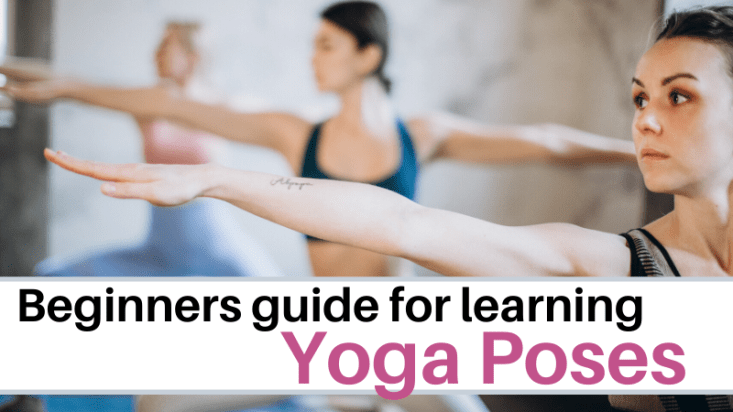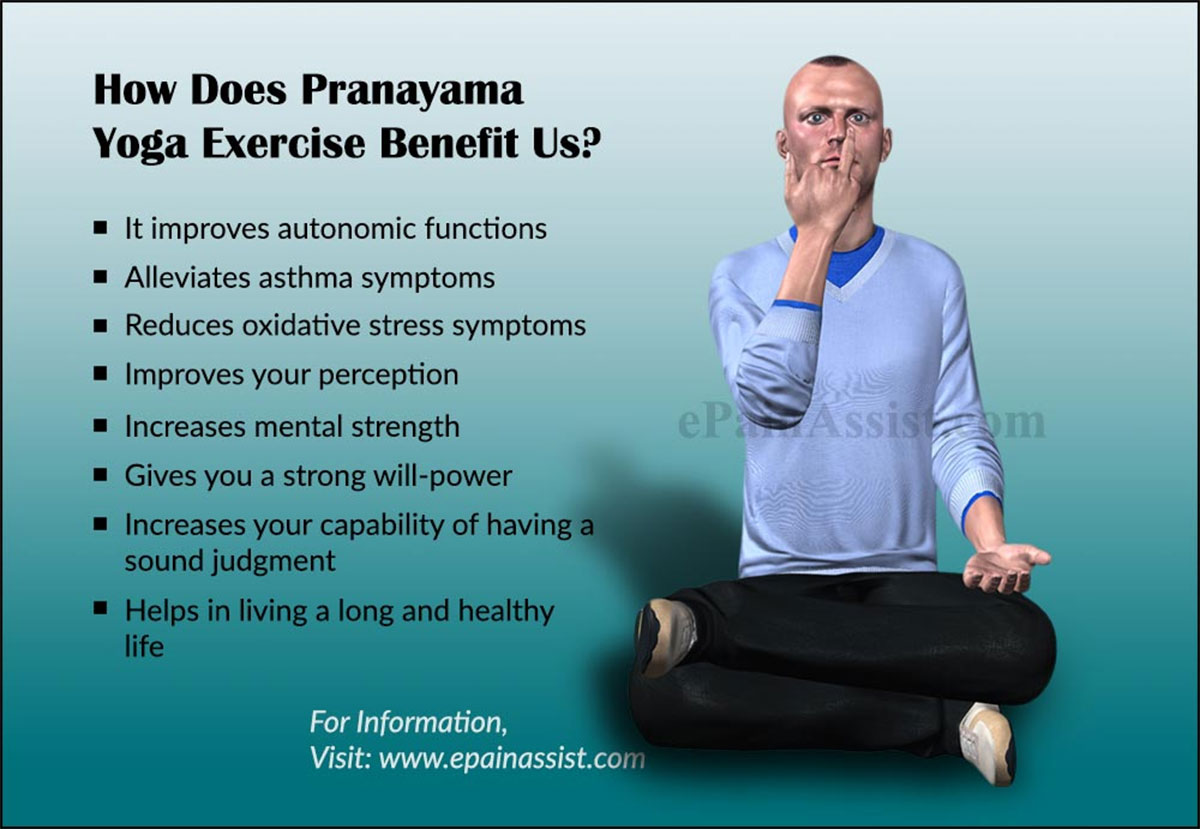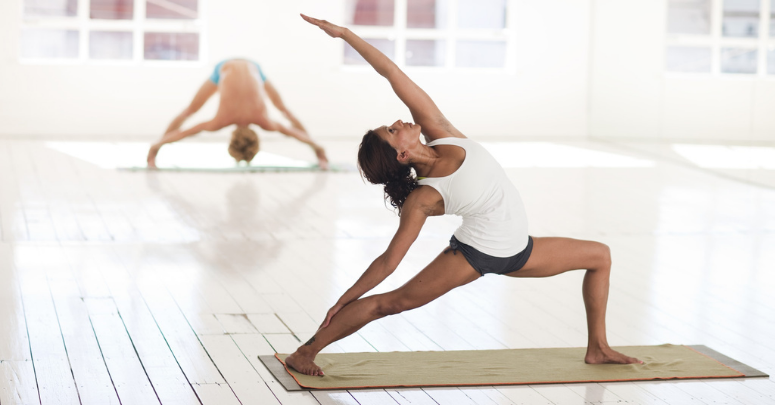
Flexibility yoga can help you improve flexibility and strengthen joints. These exercises will improve your flexibility, strengthen your joints, and reduce stress. The eye of the needle pose can be started by bending your knees, bringing your right leg up towards your chest. Then switch legs and hold for 30 seconds. Switch sides. Try the headstand for greater flexibility.
Stretching muscles
Flexibility yoga involves stretching our muscles, ligaments, and tendons. During the stretching process, the inverse (stretch-) reflex is activated. This reflex helps us to release muscle tension and protect tendons. We can increase our range and stability by stretching our muscles, tendons and ligaments. However, we should avoid pushing too far and risking injury. Stretching beyond the elastic edge of muscles and tendons can cause injury.

Strengthening joints
Flexibility training improves flexibility and mobility, in addition to strengthening your joints. Regular yoga classes and home stretching routines can help you get the most out of these exercises. Regular stretching of the muscles around joints can help maintain their full range of motion and reduce joint pain. These exercises are easy to modify to fit your level of fitness. Flexibility training is a great way to improve your flexibility. So, if you are having joint pain, give yoga a try today!
Reducing stress
You want to learn yoga flexibility to reduce stress? If so, you've come to the right place. These are the best yoga poses to help you relax and stress reduce. Spinal twist is a yoga pose that stretches the hips and glutes. Start by laying on your back with your right knee bent towards your chest. Place your left foot near your left hip. Inhale, and twist your spine. To hold the position, press your palms together. Repeat this process for the other side.
Flexibility improvement
Although stretching is often thought of as the most effective way to increase flexibility, there is a more scientific explanation for the effects of yoga. Michael Alter, the scientist of flexibility, says that flexibility is not a function of the elasticity in healthy muscle fibers. Alter states that one muscle fiber can be stretched out to 150 percent its length at rest without tearing. This makes it strong enough to perform most stretches.

Avoiding injuries
It is possible to avoid injury by slowing down while performing poses. Keep your spine in good shape while doing yoga poses. This will ensure you are able to use your core muscles properly. It is important to keep your posture straight and strengthen your core muscles in order to avoid injuries from yoga classes. Good posture can help prevent injuries from occurring throughout your day. Follow these tips to avoid injury to your neck, arms and hands.
FAQ
Are there classes that I can take with other people?
This depends on the class. Some teachers only offer private lessons. Others provide group classes where students can interact with one another.
Some studios offer small classes called "classes in a class," which allows you to meet people with similar interests.
How long should a class of yoga be?
Yoga sessions are generally between 45 minutes and 1 hour. The type and amount of yoga you do will dictate the length of the session. For strength-building exercises, it would be sufficient to last 45-60 minutes. However, if you're looking for relaxation or meditation, an hour or longer may be necessary.
The length also varies depending on what kind of yoga class you're taking - some classes focus on moving quickly while others emphasize slow, deep stretches.
How long do yoga classes last?
Yoga classes can last from 45 minutes to 90. Some teachers offer shorter or longer sessions at different times throughout the week.
Do I need to warm up before doing yoga?
No. You don't need to warm up before performing a yoga session.
Stretching before you go to the gym can help ease stiff muscles.
Can I do yoga every single day as a beginner and still be able to practice?
Yoga is a wonderful way to strengthen your body. It also helps you relax and release stress. You don't have to be a yoga expert to start practicing it regularly. Beginners should practice yoga for 20 minutes three times per week.
This will be enough time to start. Then, you can slowly increase the amount of time you practice.
How much yoga can you take?
Yoga is not a sport. There is no maximum number of repetitions you have to do before you start getting tired. Instead, focus on enjoying the experience and taking things slowly.
You don't have to worry if you do lose your way once in a while. Keep going where you are at the moment.
If you're new to yoga, begin with short sessions of 10 to 15 minutes and work your way up from there.
Statistics
- A 2020 review of 27 studies (1,805 total participants) of yoga interventions in children or adolescents found reductions in anxiety or depression in 70 percent of the studies, with more promising results for anxiety. (nccih.nih.gov)
- The American Psychological Association recently shared that 84% of American adults feel the impact of prolonged stress (5). (healthline.com)
- The people in the yoga group were 37 percent more likely to have quit smoking by the end of the 8-week program. (nccih.nih.gov)
- In comparison, a 125-pound person is estimated to burn 135 calories in 30 minutes of walking (at a pace of 15-minute miles) and 210 calories bicycling at a moderate pace on a stationary bike. (everydayhealth.com)
- About one in seven U.S. adults practiced yoga in the past 12 months, according to a 2017 national survey. (nccih.nih.gov)
External Links
How To
Is yoga a great workout?
Yoga isn’t only for those looking to lose weight. Yoga can help you improve flexibility, balance and coordination as well as strength, focus, calmness, and coordination.
Yoga isn't just a form of exercise. These poses can be used to help you relax and meditate. They can improve our posture, concentration and breathing.
Yoga is a practice of yoga. Yogis follow various forms of yoga, including Hatha, Ashtanga, Iyengar, Vinyasa, Bikram, Kundalini, Yin Yang, and Restorative.
There are many kinds of yoga. However, all share similar goals. Each type of yoga focuses on different aspects. Some yoga styles include meditation, pranayama, and Hatha.
You don't need any equipment for some yoga exercises:
-
Sun Salutation – This sequence of 12 poses begins with a forward bend and is followed by 10 more.
-
Warrior Pose - While holding a stick or staff, a warrior pose is done.
-
Triangle Pose: This is where one leg is lifted behind the other and you bend at your knees.
-
Standing Forward Bend - This pose is performed by sitting on the floor with legs straight and then folding forward at the waist.
-
Seated Twist: This is a pose that can be done while seated on a mat or in a chair.
-
Cobra Pose - This pose is performed lying flat on your back with arms overhead.
-
Child's Pose - This pose is done while lying face up on the ground.
-
Cat/Cow Pose -- This pose is a mix of a cow pose and a cat pose. While lying face down, raise your upper body off the ground. Next, roll onto your back and place both of your hands under you shoulders.
-
Head Tilt – This pose involves tilting your head back, while your eyes are closed.
-
Shoulder Stand – This position is where you stand upright while your arms are raised above and feet are raised above the neck.
-
Tree Pose - This pose is achieved while kneeling on your knees with both hands placed underneath your shoulders.
-
Bow Pose – This is when you bend forward from your hips and place your hands on the ground.
-
Corpse Pose -- This pose is for five minutes.
-
Mountain Pose - This pose is called mountain pose because you stand tall with your spine erect.
-
Legs up the Wall Pose: This pose requires that you hang upside-down on a wall.
-
Side Angle Pose – This is achieved by leaning against the wall and placing your right arm near the wall.
-
Plank Position- When you lie on your stomach and extend your left hand and right foot apart, you can achieve this position.
-
Bridge Pose- Balance on your elbows and toes for this pose.
-
Reverse Table Top - This position is achieved by lying on the stomach and reaching your arms towards your ceiling.
-
Handstand - This position requires balance and strength. To do this pose, you can either hold yourself between two walls or a door frame.
-
Half Moon Pose also known as Hero Pose. It is performed by standing on your hands and toes.
-
Handstand or Headstand - This pose requires balance and strength. You can perform this pose either on a wall or using a doorframe.
-
Forearm Balance- This position is done with your forearms on a tabletop.
-
Spinal Twist: This pose is where your belly meets your arms.
-
Supported Bound Angle Pose - This pose requires balance and support. For support, use a beam or tree branch to help you balance.
-
Wide Leg Forward Fold - This pose is achieved by spreading your legs apart and touching your toes.
-
Single Pigeon Pose – This pose is similar the the wide leg forward fold, but has only one limb extended.
-
Extended Puppy Dog Poses-This pose is extremely relaxing. It's done by extending your legs outward and bending your knees.
-
The Forward Bend pose involves bending forward and squatting cross-legged.
-
Crow Pose is a difficult pose that can be very rewarding once you have mastered it. This is achieved by elevating your arms above your head, and then lowering your arms until they are parallel to the ground.